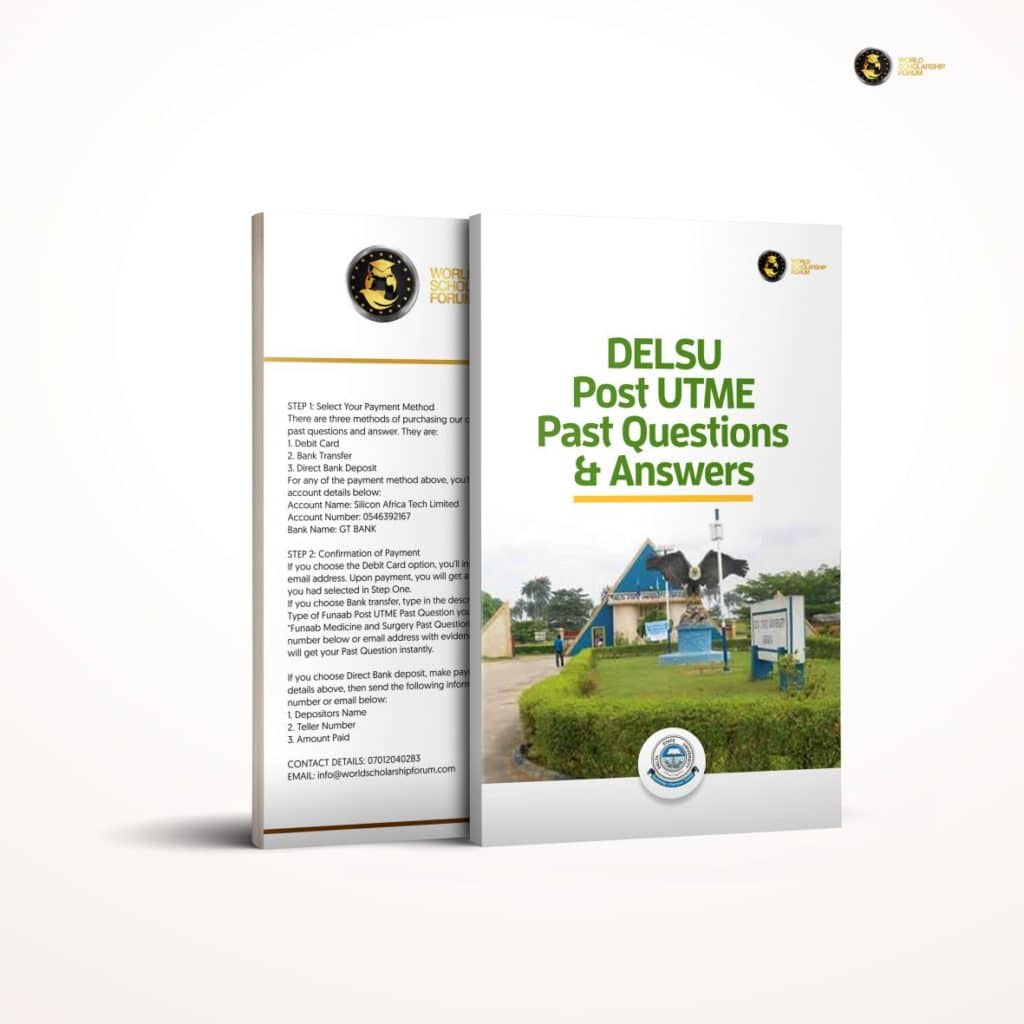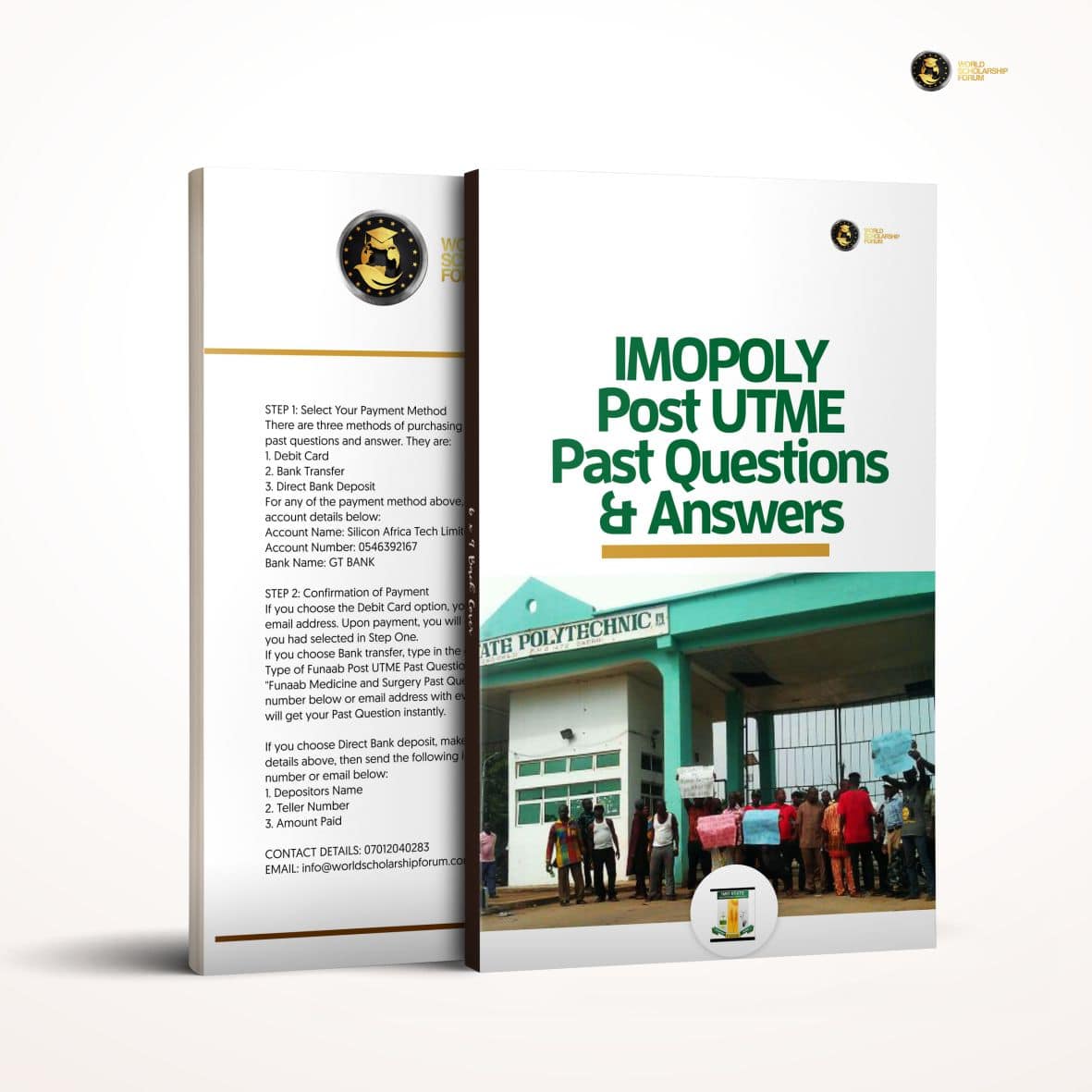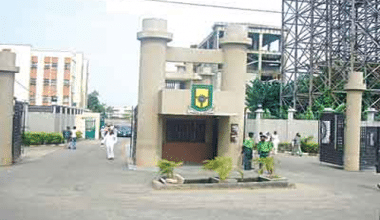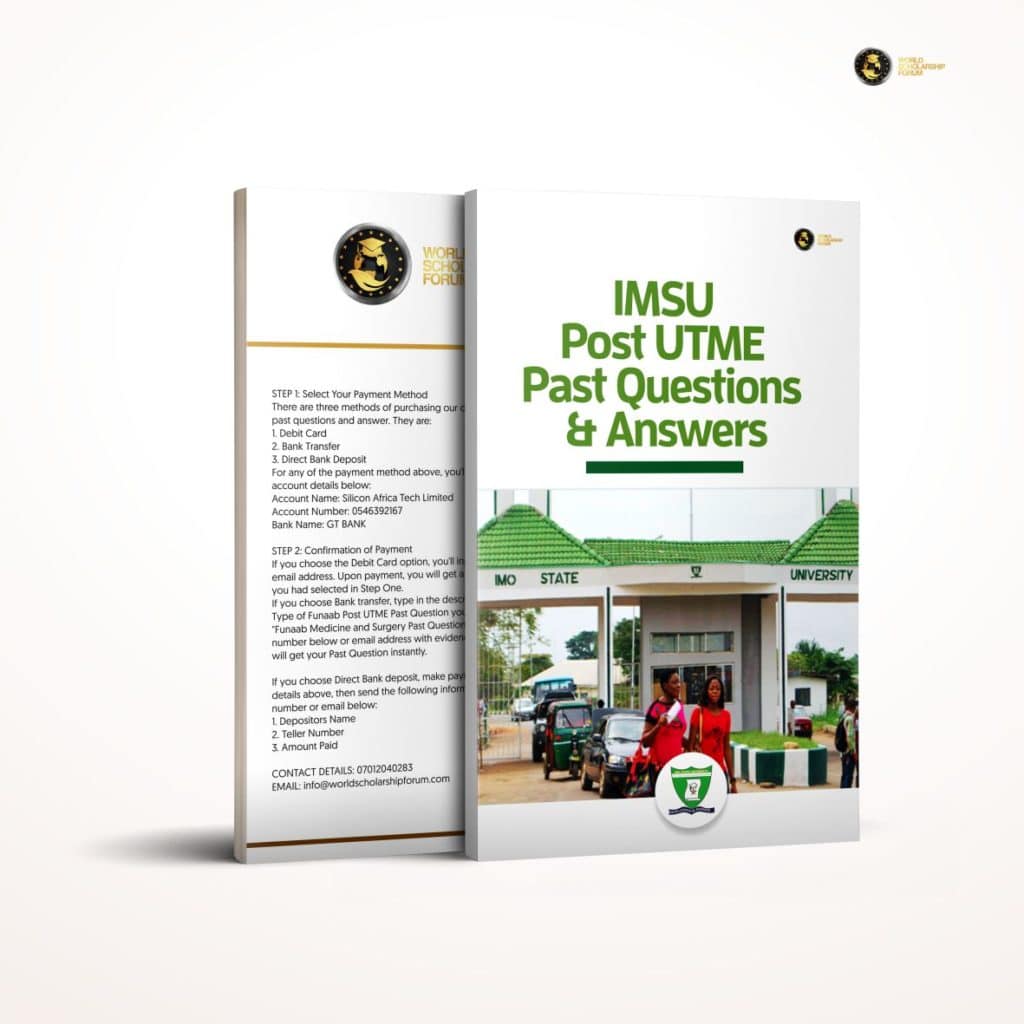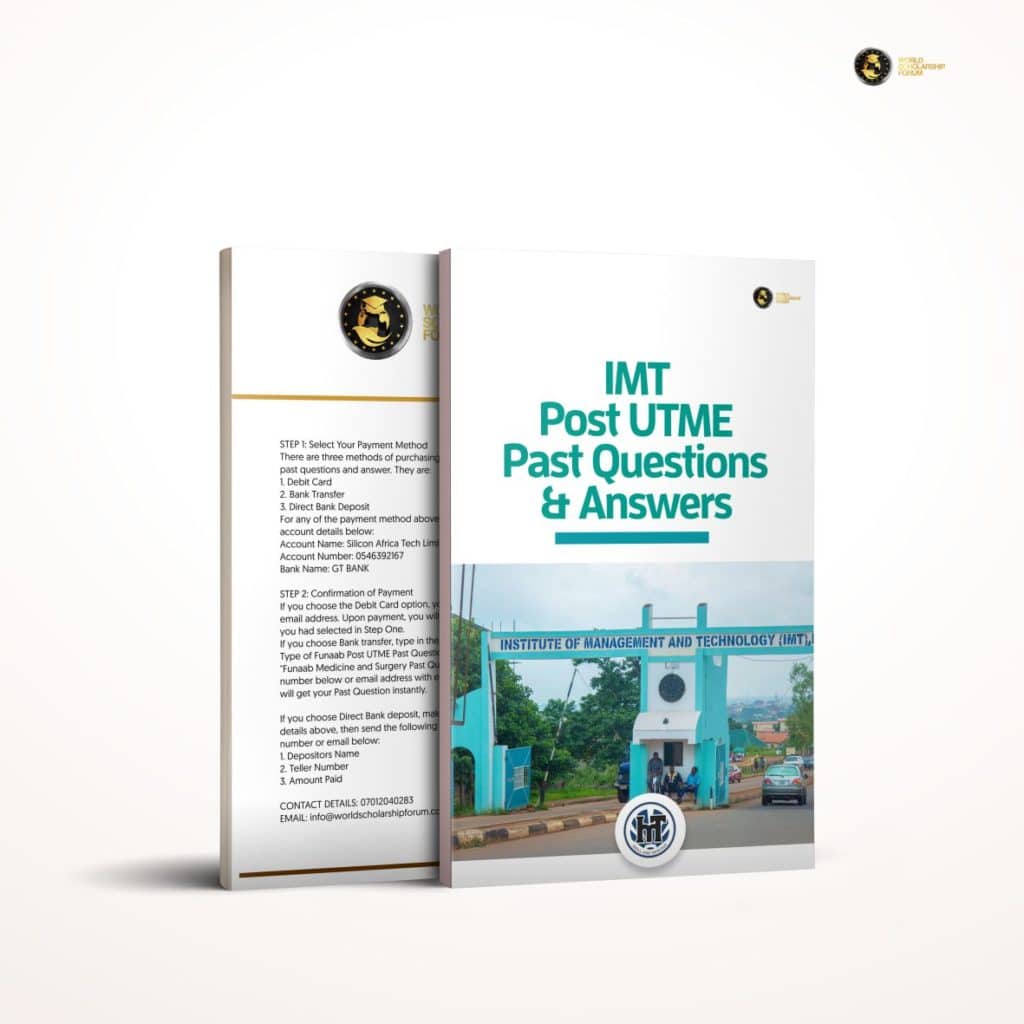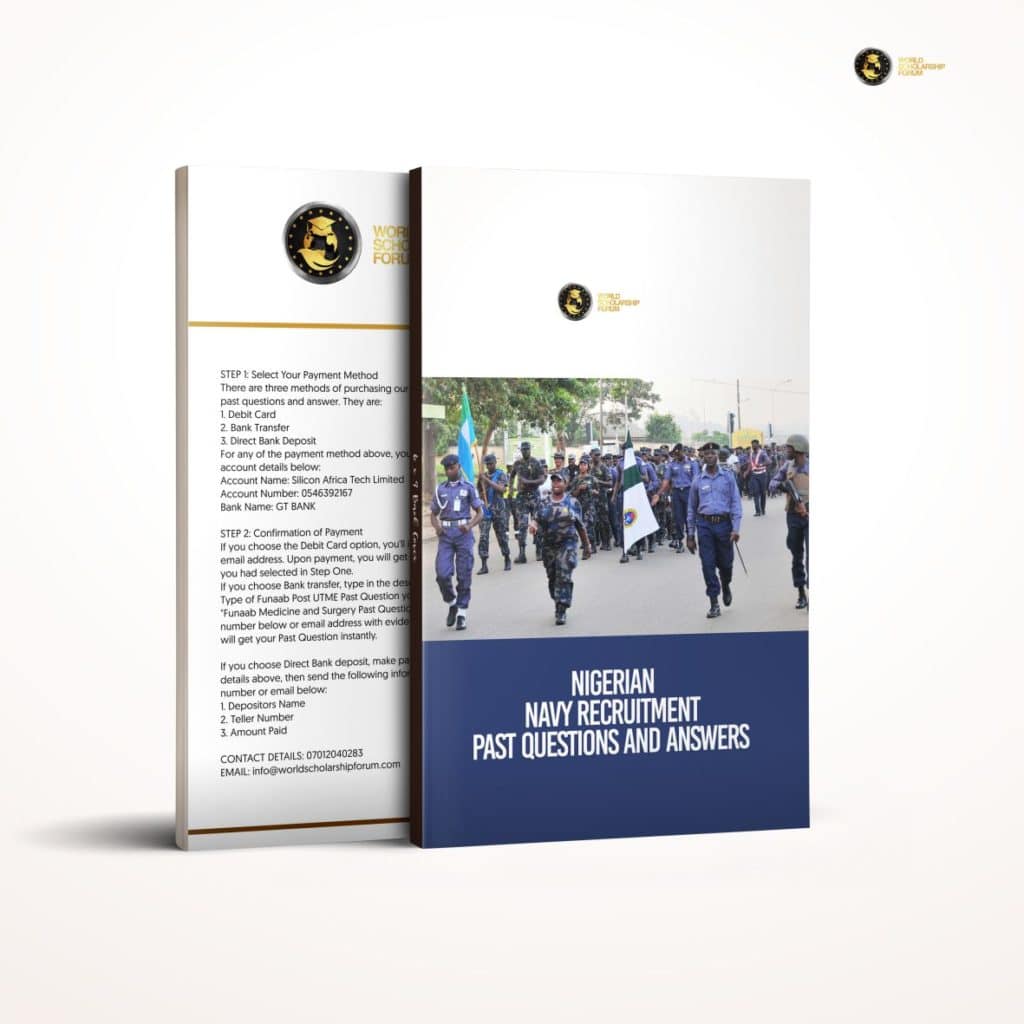The most difficult stage in securing admission at Benue State University is the Post Utme screening exercise. The majority of candidates who did exceedingly well in UTME 2024 will still not gain admission.
This is no prophecy, it is a glaring truth. The good news is with a copy of BSU Post UTME Past Questions and Answers, you are sure of 70% and above. So, get your copy here.
A lot of Nigerian students spend four to five years at home after their Senior secondary school certificate examinations. The most common reason is that they are unable to gain admission because of their low points in JAMB and Post UTME exams.
For every examination, anything could pass for preparation but there is the right preparation for each exam. Research shows that only 10% of students who just prepared pass an examination. Ninety percent of the total number of students who pass exceedingly well in any examination had prepared with the right materials.
The right material for the Benue State University Post Utme is BSU POST UTME Past Questions and Answers. So get your copy immediately.
Pay the sum of one thousand Naira into this bank detail to get a copy of BSU Post-UTME Past Questions and Answers immediately.
Account Name: Silicon Africa Tech Limited
Account Number: 0546392167
Bank Name: GT BANK
CONTACT DETAILS: 07012040283
EMAIL: info@worldscholarshipforum.com
It is really important, however, that you read this article to the end to get other vital information.
What is the Nature of BSU Post UTME?
If you understand the nature of BSU Post UTME, then, you will know how best to prepare for this exam. In summary, you will answer questions from the same subjects you wrote in JAMB.
That is to say, if you wrote Maths, English language, Crs, and Government as an art student in UTME 2024, you should also expect questions from these subjects.
If you get a copy of BSU Post UTME Past Questions and Answers, you will get deep insight on the number of questions you will answer and how much time you have to do justice to these questions.
The best time to begin practicing is now, your Covid 19 stay at home challenge could be to finish your past questions study pack before the break is over.
Why You Should Get The BSU Post JAMB Past Question Papers and Answers
Benue State University is a highly competitive university. Only about 15% of students who apply to the university gain admission. The secret to the selection of the successful student is the sum of the composite scores. Only candidates who scale the last and most important hurdle become undergraduates in BSU.
So many of them prepared extensively with this Past Questions and Answers. You need this to begin your undergraduate journey in the capital city of the basket food of the nation.
We have discovered that over the years, Benue State University repeat its past questions. If you get this Past Question, you will be better equipped to pass the BSU Aptitude Test in one sitting and be among those selected for admission. Interestingly, purchasing this BSU Aptitude Test Past Question will grant you full access to our team of experts.
Even though they do not offer admission, they will provide you with details on how to secure your place. You will also have an opportunity to interact with your colleagues on BSU Post UTME WhatsApp Group.
In fact, even as an undergraduate, you will get information on where to get scholarship as an undergraduate or even your study abroad options.
How to Get the BSU Post UTME Past Questions and Answers
Our compiled extensively detailed BSU Post UTME past questions cost N1,000 for your subject combination and to get it, follow the steps below:
STEP 1: Select Your Subject Combination
You will write the same subject combination you wrote in UTME for the BSU Post-UTME. So, we have compiled the subject combination you wrote in UTME based on the course you applied for in BSU.
Therefore, all you need do is specify the course you applied for in the description of your payment.
STEP 2: Select Your Payment Method
There are three methods of purchasing our original BSU Aptitude Test past questions and answer. They are:
1. Debit Card
2. Bank Transfer
3. Direct Bank Deposit
For any of the payment method above, you’ll be paying into the account details below:
Account Name: Silicon Africa Tech Limited
Account Number: 0546392167
Bank Name: GT BANK
STEP 3: Confirmation of Payment
If you choose the Debit Card option, you’ll input your card details and email address. Upon payment, you will get a mail of the past question you had selected in Step One.
If you choose Bank transfer, type in the description of payment: “The Type of BSU Post UTME Past Question you’re purchasing.” e.g “BSU Electric Engineering Past Question.” Then contact the number below or email address with evidence of payment and you will get your Past Question instantly.
Free BSU Post UTME Past Questions and Answers – Engineering
Choose the right answer from the list of options below.
1. An air bubble rises from the bottom to the top of a water dam which is 40 m deep. The volume of the bubble just below the surface is 2.5 cm3. Find its volume at the bottom of the dam, if the atmospheric pressure is equivalent to 10 m of water.
A. 2.0 cm3
B. 1.6 cm3
C. 0.625 cm3
D. 0.5 cm3
ANS: D
2. When equal weights of iron and water are subjected to an equal supply of heat it is found that the piece of iron becomes much hotter than water after a shorter time because_____.
A. the specific heat of iron is higher than that of water
B. iron is in solid form
C. water is in liquid form
D. the specific heat of water is higher than that of iron
E. the specific heat of iron is infinite
ANS: D
3. Of two identical tuning forks with natural frequency 256Hz, one is loaded so that 4 beats per second are heard when they are sounded together. What is the frequency of the loaded tuning fork?
A. 260Hz
B. 252 Hz
C. 248 Hz
D. 246 Hz
ANS: A
4. Radio waves have a velocity of 3 x 108 m/s. A radio station sends out a broadcast on a frequency of 800KHz. The wavelength of the broadcast is_____.
A. 240.0 m
B. 267.0m
C. 375.0 m
D. 37.5 m
E. 26.7 m
ANS: C
5. A narrow beam of white light can be split up into different colours by a glass prism. The correct explanation is that______.
A. white light is an electromagnetic wave
B. the prism has all the colours of the white light
C. white light has undergone total internal reflection in the prism
D. different colours of white light travel with different speeds in glass
ANS: D
6. 2H2S(g) +SO2(g)→3S(g) +2H2O(l).
The above reaction is______.
A. a redox reaction in which H2S is the oxidant and SO2 is the reductant
B. a redox reaction in which SO2 is the oxidant and H2S is the reductant
C. not a redox reaction because there is no oxidant in the reaction equation
D. not a redox reaction because there is no reductant in the reaction equation
ANS: B
7. How many unpaired electrons are in the p- orbitals of a fluorine atom?
A. 1
B. 2
C. 3
D. 0
ANS: A
8. A metal M displaces zinc from ZnCl2 solution. This shows that_____.
A. electrons flow from zinc to M
B. M is more electropositive than zinc
C. M is more electronegative than zinc
D. zinc is more electropositive than M
ANS: B
9. Increasing the pressure of a gas,______.
A. lowers the average kinetic energy of the molecules
B. decreases the density of the gas
C. decreases the temperature of the gas
D. increases the density of the gas
E. increases the volume of the gas
ANS: D
10. A quantity of electricity liberates 3.6g of silver from its salt. What mass of aluminum will be liberated from its salt by the same quantity of electricity?
A. 2.7g
B. 1.2 g
C. 0.9 g
D. 0.3 g
ANS: D
